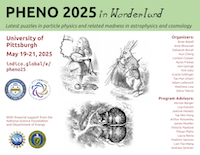Speaker
Description
I will discuss the blue loop stage of intermediate mass stars as a type of ``magnifying glass'', where even seemingly small effects in prior stages of evolution, as well as assumptions about stellar composition, rotation, and convection, produce discernible changes. As such, blue loops, and especially the existence and properties of Cepheids, can serve as a laboratory where feebly connected Beyond Standard Model particles such as axions can be gainfully studied. Our simulations, performed with \texttt{MESA}, place bounds on the axion-photon coupling using the galactic Cepheid S Mus, with dynamically-determined mass of $6 M_\odot$, as a benchmark. Less conservative (but more stringent) bounds on the axion-photon coupling are given for a $9 M_\odot$ model, which is the heaviest that can be simulated if overshoot is incorporated, and tentative projections are given for a $12 M_\odot$ model, which is approximately the heaviest tail of the mass distribution of galactic Cepheids determined by pulsation models using Gaia DR2. The main message is that the reliable simulation and observation (ideally, through dynamical mass determination) of massive Cepheids constitutes an important frontier in axion searches.

